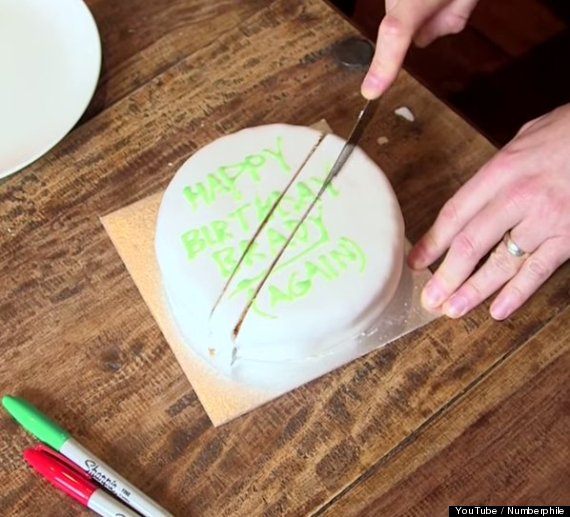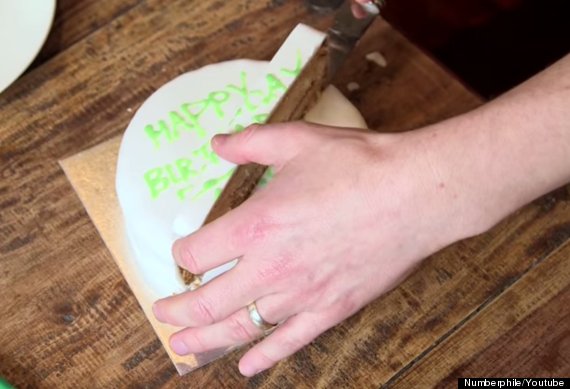You've had your share of birthdays so you know perfectly well how to cut a cake, right?
Don't count on it.
As British mathematician Alex Bellos explains in a fun new video from his Numberphile series, the traditional approach to divvying up a cake -- cutting a series of wedges -- just doesn't cut it from a scientific standpoint. Or from the standpoint of flavor.
"You're not maximizing the amount of gastronomic pleasure that you can make from this cake," he says in the video, adding that once you cut out a wedge, you expose the inside of the cake to the air -- and it dries out.
A better way, Bellos says, has existed for more than a century. In 1906 the journal Nature ran a letter from Francis Galton in which the celebrated British polymath offered -- "for his own amusement and satisfaction" -- what he considered a superior method of cutting a cake. The goal, he wrote, was to cut it "so as to leave a minimum surface to become dry."
Scroll down for photos showing the technique -- and never eat dry cake again.
![cake 1]()
![cake science]()
![cake 2]()
![cake science]()
![cake 3]()
![cake 4]()
![cake 5]()
Don't count on it.
As British mathematician Alex Bellos explains in a fun new video from his Numberphile series, the traditional approach to divvying up a cake -- cutting a series of wedges -- just doesn't cut it from a scientific standpoint. Or from the standpoint of flavor.
"You're not maximizing the amount of gastronomic pleasure that you can make from this cake," he says in the video, adding that once you cut out a wedge, you expose the inside of the cake to the air -- and it dries out.
A better way, Bellos says, has existed for more than a century. In 1906 the journal Nature ran a letter from Francis Galton in which the celebrated British polymath offered -- "for his own amusement and satisfaction" -- what he considered a superior method of cutting a cake. The goal, he wrote, was to cut it "so as to leave a minimum surface to become dry."
Scroll down for photos showing the technique -- and never eat dry cake again.






